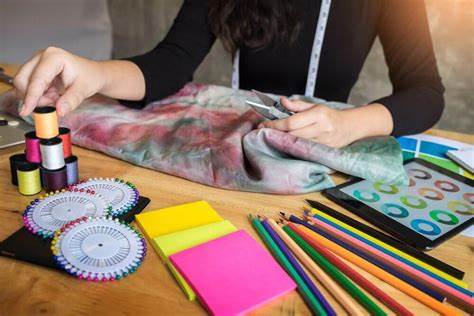Learn all about fabric design, including the skills and tools needed to excel in this creative field. This ultimate guide also explores the different career paths available to fabric designers.
Introduction
Fabric design is a creative and exciting field that combines artistry with technical skill. From fashion to home decor, fabric designers play a critical role in creating the textiles that bring our favorite products to life. In this ultimate guide, we’ll explore the world of fabric design, including the skills and tools needed to excel in this field, as well as the different career paths available to fabric designers.
Skills Needed for Fabric Design
Fabric design is a fascinating field that requires a combination of creativity, technical skills, and knowledge of textiles. Designers must have a keen eye for color, pattern, and texture to create unique and original designs that stand out in the market.
Technical skills such as pattern making and color theory are essential for creating designs that are not only visually appealing but also functional and practical. Pattern making involves creating the blueprint for a design, taking into account factors such as scale, proportion, and repeat. Color theory, on the other hand, involves understanding how different colors interact with each other and how to create harmonious color palettes.
In addition to technical skills, a deep knowledge of textiles is crucial for fabric design. Designers must understand the properties and characteristics of different fabrics, such as their texture, drape, and durability. This knowledge allows designers to create designs that work well with specific materials, ensuring that the final product is both beautiful and functional.
Fabric designers must also consider the intended use of the fabric, whether it’s for clothing, upholstery, or other applications. This requires an understanding of how the fabric will be used and how it will be subjected to wear and tear. For example, a fabric designed for upholstery may need to be more durable and stain-resistant than a fabric designed for clothing.
Overall, fabric design is a complex and multifaceted field that requires a unique blend of creativity, technical skills, and knowledge of textiles. Designers who excel in this field are able to create beautiful and functional designs that meet the needs of their clients and customers.
Tools Used in Fabric Design
The tools used in fabric design vary depending on the designer’s preferences and the specific project requirements. Traditional drawing tools such as pencils, markers, and paints are often used to create initial sketches and concepts. Digital design tools such as Adobe Illustrator and Photoshop are also commonly used, allowing designers to create and manipulate designs on a computer. Finally, fabric printing tools such as screen printing or digital printing equipment are used to create the final products.

Career Paths in Fabric Design
Fabric designers can find careers in a variety of industries, including fashion, home decor, textile manufacturing, and independent design. In the fashion industry, fabric designers work with clothing designers to create the textiles used in garments. In the home decor industry, designers create fabrics for curtains, upholstery, and bedding. In textile manufacturing, designers work on developing new fabrics and improving existing ones. Finally, many fabric designers choose to work independently, creating their own designs and selling them online or through local markets.
How to Get Started in Fabric Design
To get started in fabric design, it’s important to have a solid education and training in the field. Many colleges and universities offer programs in textile design or fashion design that can provide the necessary skills and knowledge. Building a strong portfolio of work is also important, as this will showcase your skills and help you stand out to potential employers or clients. Networking and professional development opportunities, such as attending trade shows or joining industry organizations, can also help you connect with others in the field and stay up-to-date on the latest trends and technologies.
Conclusion
Fabric design is a dynamic and rewarding field that offers a range of career opportunities. Whether you’re interested in fashion, home decor, or textile manufacturing, there’s a role for fabric designers in almost every industry. By developing the necessary skills and knowledge, building a strong portfolio, and networking with others in the field, you can set yourself up for a successful and fulfilling career in fabric design.



